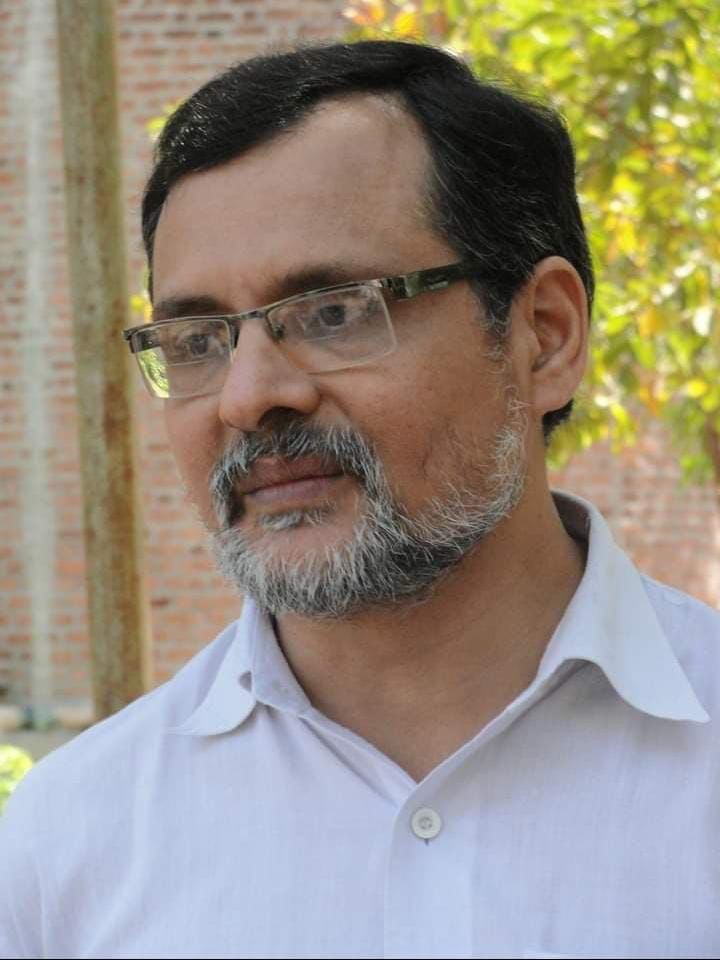Sardar Vallabhbhai Patel: India’s Benjamin Franklin, More Than Bismarck
- In Current Affairs
- 10:06 PM, Oct 31, 2025
- Viren S Doshi
On the 150th Birth Anniversary of the Iron Man of India (October 31, 1875 – October 31, 2025)
Introduction - A Colossus in the Shadows of Gandhi and Nehru
As India celebrates the sesquicentennial of Sardar Vallabhbhai Patel’s birth, Indians are reclaiming a historical truth often obscured by the luminous Mahatma Gandhi and Jawaharlal Nehru. Sardar Patel was not merely the most trusted lieutenant of Mahatma Gandhi and “Sardar” (the leader of the masses) but also for the millions of Indians; he was an indispensable architect of modern India’s territorial and administrative unity.
If Benjamin Franklin was the pragmatic genius who stitched together the fractious American colonies into a viable modern republic, Sardar Patel performed an audacious feat — forging 562 princely states into India as a single, sovereign nation without fracturing it under the centrifugal forces of partition, linguistic diversity, and feudal privilege.
And though Sardar Patel is called the Iron Man of India, he was unlike Germany's Iron Chancellor Otto von Bismarck. Bismarck’s unification of Germany relied on “blood and iron” and sowed the seeds of future European cataclysms. Sardar Patel’s methods were rooted in negotiation, constitutional legality, and minimal force — making him, in scale and moral stature, an outstanding figure among the architects of modern nations.
This article revisits Sardar Patel’s life, evaluates his enduring legacy on his 150th birth anniversary and dissects the Franklin and Bismarck analogies to realise that Sardar Patel figures out as an outstanding leader among the architects of modern nations, all this as a humble tribute.
Early Life: From Gujarat’s Soil to the Bar of Ahmedabad
Born on October 31, 1875, in Nadiad, Gujarat, to a self-cultivating Patel-Patidar family, Vallabhbhai Jhaverbhai Patel was the fourth of six children. His father, Jhaverbhai, had served in Rani Lakshmibai’s army during India's 1857 War of Independence. Sardar Patel used to invoke proudly this illustrious heritage.
Self-reliant from youth, he saved money from odd jobs to fund his legal studies in England, topping the Barrister examination in 1913 despite arriving with scant resources.
Returning to India, he built a lucrative practice in Ahmedabad, earning thousands of rupees monthly (equivalent to crores today). Yet material success never dulled his conscience and his sense of justice.
The turning point came in 1917 when he met Gandhi at the “Gujarat Rajkeey Parishad” - a congregation for political discourse. Patel’s transformation from a dapper, anglicised lawyer to a khadi-clad satyagrahi was swift and total.
He led the Kheda Satyagraha (1918), mobilising peasants against oppressive land revenue imposed by the Colonialist British during famine—a campaign that showcased his organisational genius and cemented his alliance with Gandhi and earned him the title “Sardar” - the leader of the masses.
Sardar Patel - Vision and Mission
Sardar Patel’s integration of India was strong and yet not brittle. It preserved cultural diversity (e.g., retaining Maharaja titles initially) while asserting national sovereignty. He told the Chamber of Princes in 1947, “Your states are not museum pieces; they must merge into the living stream of India.” Only a leader with conviction and roots in the soil and soul of India could have done this amazing feat.
More importantly, today is the time to revisit Sardar Patel as a leader of United India who stands tall among the unifier leaders of the modern nations. Generally, taking a bird's eye view of a couple of centuries, people say that he is the Bismarck of India. Let us see how it is more than that.
The Franklin Parallel: Nation-Building Through Pragmatism and Persuasion
Benjamin Franklin—printer, inventor, diplomat, and drafter of the U.S. Constitution—excelled at reconciling irreconcilable interests. He persuaded Delaware and Georgia to ratify the Constitution through compromise, not conquest. Thanks to visionary founders, the United States holds aloft the flag of democracy even after tumultuous two centuries.
Franklin’s Methods - Constitutional Convention, Federalist Papers
Timeframe -1787–1789
Outcome -Federal Republic
Sardar Patel not only mirrored but also magnified the saga of conciliation that united the United States in the integration of the princely states of India.
Thanks to Sardar, today India nourishes not only 1.4 billion human beings on the planet, but it is also standing tall as a democratic, value-based, peaceful, resilient power, shoulder to shoulder in commitment, with democracies like the United States. Countering together the challenges by Communist, Leftist, Jihadi, Colonialist, Supremacist, Globalist, Wokeist nexus.
Here is a brief analogy as to how Sardar magnified the integration mission in the case of India that Franklin pioneered for the United States.
The Scale of the Challenge
562 princely states covering 48% of India’s landmass and 24% of its population.
Rulers ranging from progressive (Travancore) to reactionary Jihadis (Junagadh, Hyderabad).
British paramountcy lapsed on August 15, 1947, creating a legal vacuum.
Sardar Patel’s “Armaments”
Instrument of Accession: A masterstroke of constitutional drafting (with V.P. Menon), limiting states to Defence, External Affairs, and Communications.
Personal Diplomacy: Sardar Patel met over a hundred rulers himself, leveraging charm, logic, and veiled warnings. The Maharaja of Bikaner later recalled, “He spoke like a soldier, persuaded like a statesman.”
Minimal Force: Only three holdouts required force:
Junagadh (1947): Plebiscite overturned the Nawab’s Pakistan accession.
Hyderabad (1948): Operation Polo—a 4-day police action ended the Nizam’s resistance.
Kashmir remained the unfinished chapter, complicated by Nehru’s internationalism.
By 1950, Sardar Patel had unified India into a Unitary Republic with Federal Features without a civil war—a feat Benjamin Franklin achieved on a canvas with 13 colonies.
Beyond Bismarck: Unification Without Militarism’s Curse
Bismarck unified 39 German states through three wars (Denmark, Austria, France) (1864–1871), creating a militarised Reich that collapsed in 1918 and fuelled two world wars. His ideology was centred on Realpolitik and Prussian hegemony.
His legacy resulted in the cult of militarism vis Weimar to the Nazis. He was dismissed by the Kaiser in 1890.
Sardar Patel left a legacy of stable democracy and secular federalism based on non-violence.
This was at the personal cost; Sardar Patel died in 1950, post-Gandhi's assassination; he was in despair. But he left behind a resilient nation.
Administrative Genius: The Steel Frame of India
As Independent India’s first Home Minister and Deputy Prime Minister (1947–1950), he reorganised the Indian Civil Service (ICS) into the Indian Administrative Service (IAS), ensuring continuity.
He was at the nucleus of efforts for social reforms and cohesion, advocating women’s inheritance rights, and he was the one who championed reforms and cohesion among India's core people - the Hindus. He was for cultural nationalism.
He supervised the rehabilitation of millions of Hindu/Sikh refugees who came to India from Pakistan as a result of the tragic partition.
His famous letter to Nehru (November 7, 1950), warning against China’s designs on Tibet, remains prophetic: “We seem to have thrown all caution to the winds.”
The Nehru-Patel Rift: Ideology vs. Pragmatism
Nehru’s romantic socialism clashed with Patel’s hard-headed realism.
Key flashpoints:
Kashmir: Patel favoured decisive military action; Nehru sought UN mediation.
China Policy: Patel’s warnings ignored; Nehru’s “Hindi-Chini bhai-bhai” proved a costly illusion.
Economic Vision: Patel backed private enterprises; he trusted Indian entrepreneurs; Nehru leaned towards socialism.
Yet Patel, as a disciplined follower of Mahatma Gandhi and as a national leader, never broke ranks publicly.
His death on December 15, 1950, left Nehru unchallenged—but also unmoored.
Legacy on the 150th Anniversary
Statue of Unity (Gujarat, 2018): World’s tallest statue (182 m), symbolising Sardar Patel’s vision with focus on unity.
National Unity Day (October 31): Instituted in 2014 to honour his birth anniversary.
Reappraisal in Academia: Many literary works by many writers have brought out the legendary works of Sardar, and some have even challenged Nehruvian or Nehru-centric historiography.
Policy Echoes: Article 370’s abrogation (2019) fulfilled Sardar Patel’s integrationist logic in Jammu & Kashmir and is also finally delivering peace and development in the valley and around, PoK remains as still unfinished task but it is now within the spectrum of possibilities unlike in the past when even the whole of Kashmir was considered as a chapter that required to be closed by giving up the entire valley to terrorist forces.
Conclusion:
On October 31, 2025, as India marks 150 years since Sardar Patel’s birth, grateful multitudes of people today remembered him as a Great Leader in his own right, not as a footnote to Nehru and even Gandhi.
If we look at the geopolitical landscape and modern political map of the world, just as India is emerging as a beacon among the comity of nations, so emerges the aura of Sardar Patel among the architects of modern nations - he is more in the frame of Franklin who drafted and achieved unity without bloodbaths, and besides he deftly dealt with the tragic outcomes of partition. India faced aftermath wars which were the fallouts of ignoring of Sardar’s ardent warnings and the Nehruvian hypersecular policies; but at the same time, India was strongly grounded in resilience infused by Sardar Patel to overcome the wars.
His warning to princely rulers applies to modern India: “In the interest of all, merge or perish.”
The Sardar’s India was geographically whole, and he tried to bridge the social fabric too. Today, Indians have pledged to finish the task of emotional integration—bridging caste, creed, and region.
As we unveil new memorials and rename roads, let the true tribute be fulfilling his dream: One Nation, One People, One Destiny. The World is One Family.
The World will rewrite the contributions of the likes of Benjamin Franklin and Sardar Patel as unifiers who delivered conciliation, statecraft and democratic states united, capable and resilient enough to counter the anti-democratic forces in the twenty-first century geopolitics.
Jai Hind. Jai Jagat.
Glory to India. Glory to the World.
Disclaimer: The opinions expressed within this article are the personal opinions of the author. MyIndMakers is not responsible for the accuracy, completeness, suitability, or validity of any information on this article. All information is provided on an as-is basis. The information, facts or opinions appearing in the article do not reflect the views of MyindMakers and it does not assume any responsibility or liability for the same.







Comments